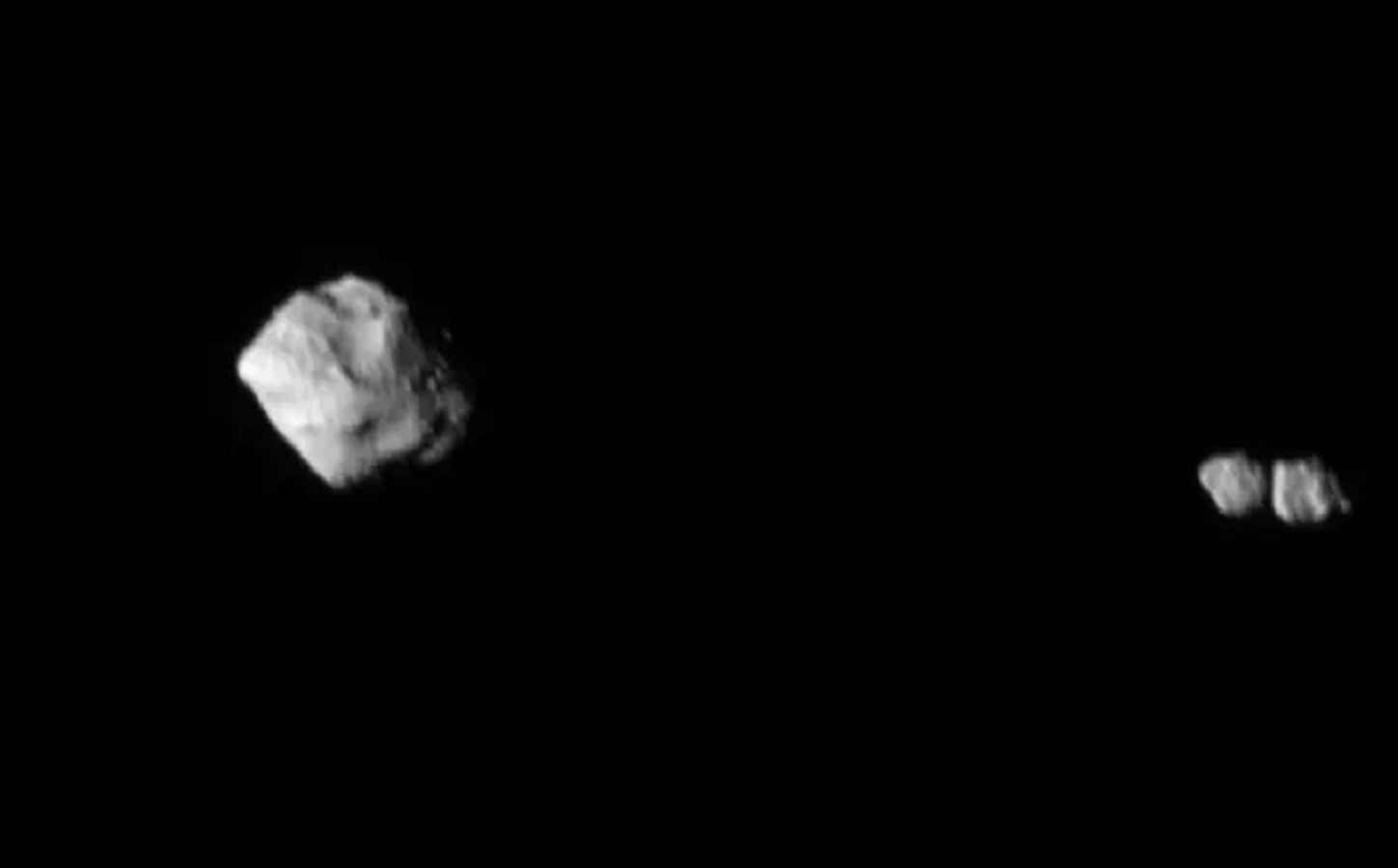When NASA’s Lucy spacecraft flew past the asteroid Dinkinesh, it found an unexpected satellite – but further images revealed that it is actually two rocks tenuously connected together
By Leah Crane
7 November 2023
The asteroid Dinkinesh and its binary contact satellite
NASA/Goddard/SwRI/Johns Hopkins APL
The asteroid Dinkinesh’s newfound moon is actually a contact binary – two objects lightly touching at their ends. This is the first time such a binary has been found orbiting another asteroid.
Dinkinesh was the first rock visited by NASA’s Lucy spacecraft, which flew past on 1 November. When the spacecraft went by, it found a smaller rock orbiting Dinkinesh, which the Lucy team has provisionally named Selam.
But as Lucy has sent more data back to Earth, it has become clear that Selam isn’t just a single object. Instead, it appears to be two similar-sized rocks connected at the end, resulting in a sort of peanut shape. The team missed it at first because in the images from Lucy, one lobe of the asteroid must have been hidden behind the other.
Advertisement
“All of these rocks are going to be their own individuals, but I must admit I would have never expected to have a bilobed satellite like this,” says Hal Levison at the Southwest Research Institute in Colorado, head of the Lucy mission. “There are several things about it that I just don’t understand.”
Read more
Asteroid hit by NASA spacecraft is behaving unexpectedly
For one, the processes that shape these small satellites aren’t expected to form multiples of the same size, says Levison. Also, for the two to be connected as they are, instead of fully merged, they would have had to collide at extremely low speeds.
